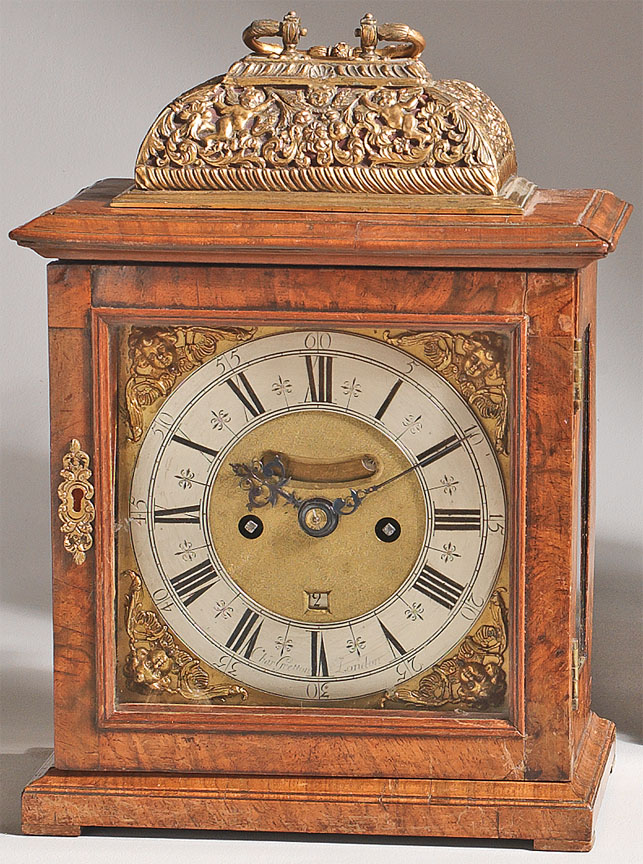 Clocks are a complicated thing to price at auction because there are really two parts to a clock and two different groups to whom they appeal: the cases, which appeal to furniture folks for different aesthetic reasons: paint, style, decoration; and the movements, which appeal to clock collectors in a different way, often for more “antiquarian” reasons.
Clocks are a complicated thing to price at auction because there are really two parts to a clock and two different groups to whom they appeal: the cases, which appeal to furniture folks for different aesthetic reasons: paint, style, decoration; and the movements, which appeal to clock collectors in a different way, often for more “antiquarian” reasons.
Tall-case clocks historically came with one of two movements (movement is the term for the actual clockworks): an eight-day movement or a 30-hour movement, so called because of the interval of time at which they required winding, meaning an eight-day clock needed winding roughly every week while a 30-hour movement would need wound just about daily. These movements would largely replace the wooden works which had been used for decades, as their economy helped make clocks more widely affordable. (Wooden works were durable in many senses, but were prone to the effects of humidity which could make them less accurate.)
Eight-day clocks typically have two movements – one for the pendulum and one for the striking mechanism, making for two keyholes on opposite sides of the dial. 30-hour clocks, on the other hand, normally just had one movement and thus one keyhole (although they were occasionally manufactured with a false keyhole to give the appearance of wealth). Eight-day clocks are now all manufactured as cable-driven, with cables holding the weights and they are either wound with a key-like crank or, in the case of chain-driven movements, by pulling on the end of the weight chains to draw the weights up.
This is also as good a place as any to note that “grandfather clock” is what some people refer to as a collector term, meaning a name that has been given by modern users or collectors rather than the “period” name, which would be how it would have been referred to by the original owner, maker or in documents at the time when it was made. The Oxford English Dictionary pins this on an 1876 song, “My Grandfather’s Clock.” Prior to this, the clocks had been known as long-case or tall-case clocks. (It’s also worth noting the 1876 date of Henry Clay Work’s composition. As the centennial anniversary of American independence, the year prompted a number of expositions and celebrations, many of them manufacturing a view of colonial history that was more nostalgic than fact-based.) Grandfather clocks are also occasionally referred to as long clocks, hall clocks, upright clocks or floor clocks.





